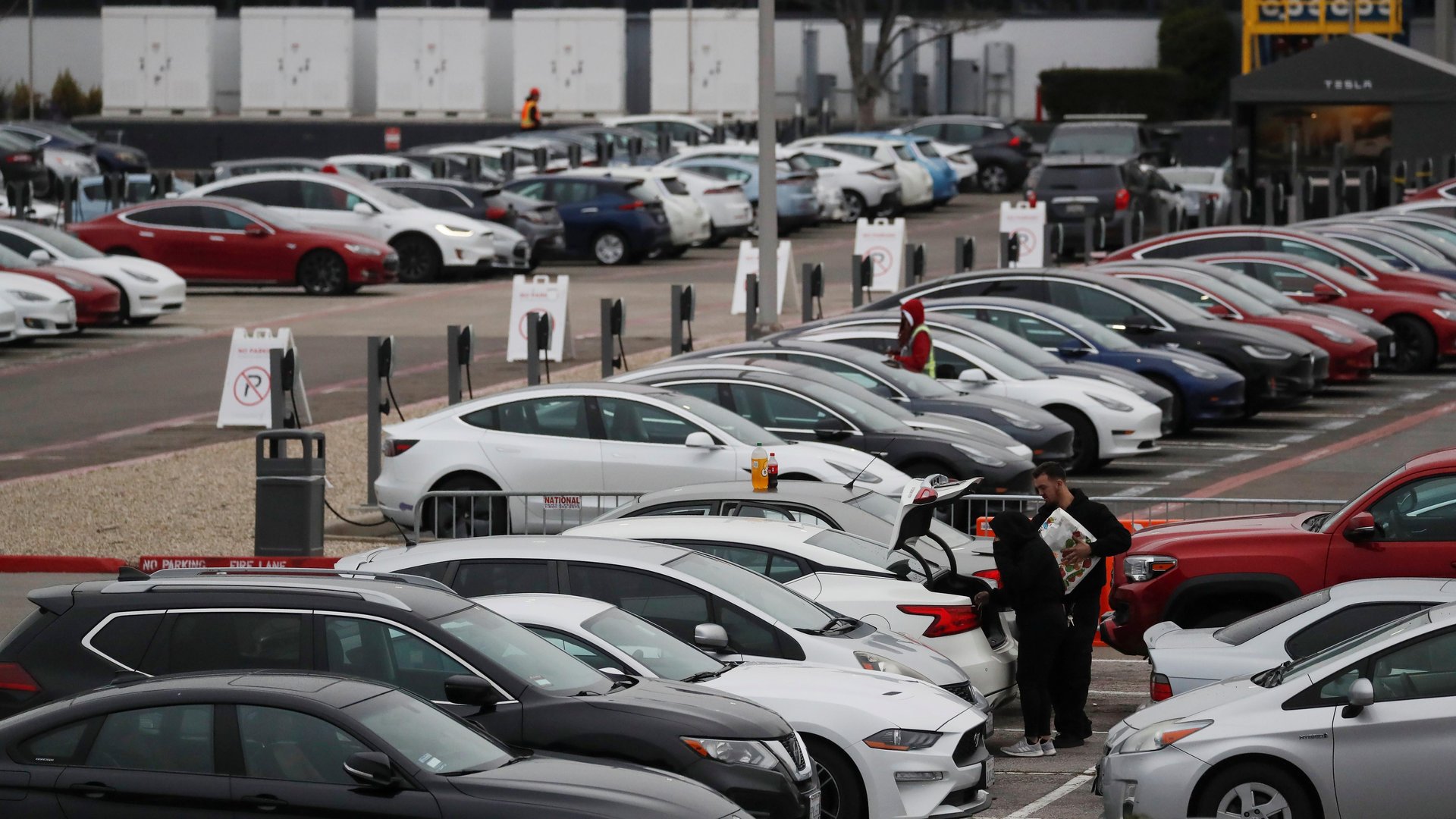Tesla’s share of the EV market is dropping in the US
Tesla is losing market share to new EV entrants—and more affordable options

Tesla’s share of the US market for electric vehicles has been comfortably north of 60% since 2018. But its lead has been slipping.
Though still the dominant player, Tesla’s market share is down from 70.5% in 2021 to 63.5%, according to data from S&P Global Mobility, which tracks registrations of new EVs. “Tesla’s position is changing as new, more affordable options arrive, offering equal or better technology and production build,” the data firm notes.
Tesla accounted for four of the top five new EV vehicle registrations in the US in 2022, according to S&P Global Mobility. General Motors’s more affordably priced Chevrolet Bolt also is in the mix.
Tesla’s market share continued to climb in 2020 with the launch of its second medium-priced vehicle, the Model Y; both are popular Tesla models.
But since 2020, the market has changed, with interest for EV adoption picking up as a warming climate becomes more apparent, and with established automakers revving up their production of electrics across the price spectrum. The Chevrolet Bolt, for example, starts at $26,500. Meanwhile, luxury EVs from Mercedes-Benz, BMW, and Audi–as well as the Ford F-150 Lightning—are coming for the high end of the EV market.
Tesla cuts prices to compete for EV sales
In recent weeks, Tesla has made deep cuts on the prices of its vehicles globally, signaling weakened demand for a company that rarely discounts and has long boasted not needing to advertise or pay for endorsements. In China, where Tesla gets nearly a quarter of its revenue, the company slashed prices in October and again at the start of January. Quartz found that prices in Hong Kong were slashed as much as 20% on Model Y type.
Meanwhile, in the US, Tesla doubled its discounts on key models at the end of December, which happened even before the arrival of the $7,500 federal tax incentive that is now in effect in the US.
The US tax incentives are intended to spur more EV sales and the building of domestic supply chains for EV parts, which could pose trouble for Tesla’s competitiveness. The EV industry has long relied on China for EV batteries and the processing of certain minerals that go into the batteries such as lithium, cobalt, and nickel.
Tesla’s fourth-quarter EV production and delivery numbers, disclosed on Jan. 3, missed Wall Street’s expectations, with the manufacturer pointing to covid-related and logistical challenges.
Like other carmakers, Tesla is grappling with a slowdown in overall vehicle demand and rising borrowing costs as central banks try to tame inflation. Musk’s divided attention after buying Twitter for $44 billion in October also has had some investors worried.
Tesla’s shares ended 2022 down 65% for the year.
Will Tesla be able to retain loyalty?
It was only a matter of time before other manufacturers would start to catch up to Tesla; the question now is whether Tesla will be able to keep an edge over its competitors.
Tesla’s stock is up 33% since the start of 2023, which may suggest that price cuts are keeping investors satisfied. Tesla also arguably has the advantage of scale. In 2022, the company started production at two new factories—in Austin, Texas, and in Brandenburg, Germany—and ramped up production in Shanghai. It’s also reportedly looking to boost production at its factory in Fremont, California.
On Jan. 25, Tesla will report its quarterly earnings, which will signal to investors how the manufacturer is faring in the current macroeconomic environment and demonstrate the effect of the price cuts.
